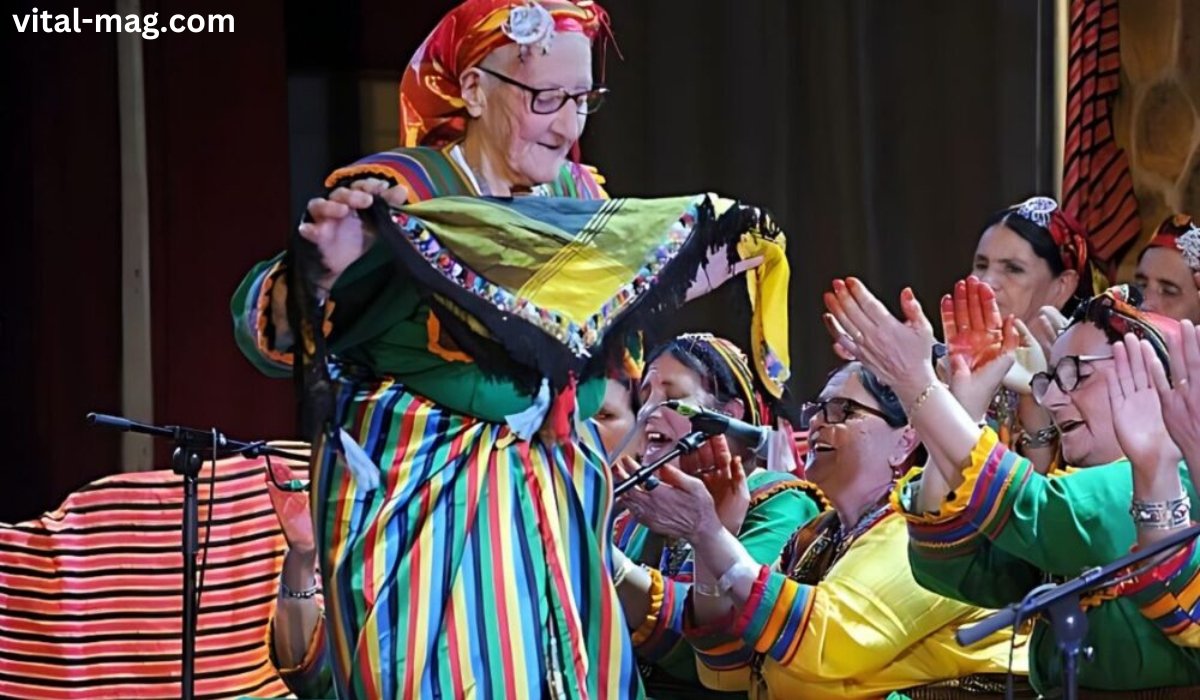Introduction
Amaziğ, often referred to as Berbers, represent one of North Africa’s most enduring and fascinating cultures. This article delves into the vibrant tapestry of the Amaziğ people, exploring their ancient origins, linguistic heritage, traditional customs, and their place in the modern world. The Amaziğ, with their profound historical roots and resilient spirit, offer a unique glimpse into a civilization that has shaped, and continues to influence, the cultural landscape of North Africa.
Brief Overview: This article will explore the Amaziğ’s ancient origins, the effects of various historical conquests, the preservation of their language, and the endurance of their traditions. We will also discuss the modern challenges they face and their ongoing cultural renaissance.
Unraveling the Tapestry of History
Ancient Origins
Pre-Roman Berber Civilizations and Their Impact
The Amaziğ people have roots that trace back to the pre-Roman era. Ancient Berber civilizations were known for their advanced agricultural practices, trade networks, and unique societal structures. They played a crucial role in the region’s development long before the influence of external powers.
Phoenician and Carthaginian Influence
The arrival of the Phoenicians and later the Carthaginians marked a significant chapter in Amaziğ history. The Phoenicians established trading posts along the North African coast, and Carthage’s expansion brought new cultural and economic exchanges that impacted the Amaziğ societies. These interactions contributed to the region’s economic prosperity and cultural diversity.
Roman Conquest and Its Legacy
The Roman Empire’s conquest of North Africa introduced new administrative structures and cultural influences. The Romans integrated the Amaziğ lands into their vast empire, leading to significant urbanization and infrastructural development. However, this period also saw the imposition of Roman culture and language, which began to influence the local Amaziğ traditions.
Islamic Conquest and Beyond
Arabization and Its Effects on Amaziğ Identity
The Islamic conquest of North Africa in the 7th century brought profound changes. Arabization affected the Amaziğ people’s language, culture, and religious practices. Despite the spread of Arabic, the Amaziğ retained much of their cultural identity and continued to practice Islam in ways that integrated their traditional beliefs.
Almoravid and Almohad Dynasties: Amaziğ Resurgence
The rise of the Almoravid and Almohad dynasties in the 11th and 12th centuries marked a resurgence of Amaziğ influence. These dynasties, led by Amaziğ leaders, revitalized the region’s political and cultural landscape, promoting the use of the Tamazight language and Amaziğ traditions.
Ottoman Empire and the Amaziğ Experience
Under Ottoman rule, the Amaziğ people experienced a period of relative autonomy in their highland regions. The Ottomans’ administrative and military practices had varying impacts on the Amaziğ, who navigated these changes while striving to maintain their cultural heritage.
Colonial Era and Resistance
French and Spanish Colonization
The late 19th and early 20th centuries brought French and Spanish colonization to North Africa. The Amaziğ faced significant challenges as colonial powers sought to control and assimilate them. This period saw the disruption of traditional lifestyles and the imposition of foreign administrative systems.
Amaziğ Resistance Movements
Throughout the colonial era, the Amaziğ people engaged in various resistance movements. These efforts were driven by a desire to preserve their land, culture, and autonomy. The resistance was marked by both peaceful protests and armed struggles, reflecting the Amaziğ’s determination to maintain their identity.
The Berber Spring: A Modern Awakening
The Berber Spring of 1980 was a significant moment in the modern history of the Amaziğ people. It represented a resurgence of cultural and political activism aimed at reviving the Tamazight language and advocating for the rights of the Amaziğ people within the broader national context.
The Enduring Spirit of Amaziğ Language
Tamazight: A Linguistic Treasure
Overview of the Tamazight Language Family
Tamazight, a member of the Berber branch of the Afro-Asiatic language family, is a linguistic treasure with deep historical roots. It encompasses a range of dialects spoken across North Africa, each with unique characteristics yet united by common linguistic features.
Dialects and Variations Across North Africa
Tamazight is not a monolithic language but a diverse group of dialects, including Tarifit, Tachelhit, and Tamazight of the Central Atlas. These dialects vary significantly in phonetics and vocabulary, reflecting the regional diversity of the Amaziğ people.
Efforts to Preserve and Revitalize Tamazight
Efforts to preserve and revitalize Tamazight have gained momentum in recent years. Various initiatives, including educational programs, media presence, and cultural activities, aim to promote the use of Tamazight and ensure its survival for future generations.
Language and Identity
The Role of Tamazight in Amaziğ Cultural Heritage
Tamazight is central to Amaziğ cultural identity. It serves as a vessel for passing down traditions, oral history, and communal values. The language’s survival is closely tied to the preservation of Amaziğ heritage and the expression of their unique cultural identity.
Challenges Faced by Tamazight Speakers
Despite its importance, Tamazight speakers face several challenges, including limited official recognition and educational resources. These challenges hinder the widespread use of Tamazight and its integration into modern society.
Linguistic Rights and Activism
Activism for linguistic rights has been pivotal in advancing the status of Tamazight. Various organizations and movements work tirelessly to secure official recognition, educational opportunities, and cultural representation for the Tamazight-speaking community.
Traditions and Customs: A Glimpse into Amaziğ Life
Social Structure and Family
Traditional Amaziğ Family Values
Amaziğ family values are deeply rooted in traditions that emphasize respect, solidarity, and communal support. Family units often function as extended networks, with strong ties between relatives and a collective approach to problem-solving.
Role of Women in Amaziğ Society
Women in Amaziğ society traditionally hold significant roles within the family and community. They are central to maintaining cultural practices, managing household responsibilities, and participating in social and economic activities.
Matrilineal and Patrilineal Systems
Amaziğ social structures vary between matrilineal and patrilineal systems, reflecting different approaches to inheritance and lineage. In some communities, descent and inheritance are traced through the mother’s side, while others follow a patrilineal tradition.
Celebrations and Rituals
Amaziğ Festivals and Their Significance
Amaziğ festivals are vibrant celebrations that mark important cultural and agricultural milestones. Festivals such as Yennayer (the Amaziğ New Year) and Imilchil Wedding Festival are occasions for communal gatherings, traditional music, and vibrant displays of cultural heritage.
Traditional Music and Dance
Traditional Amaziğ music and dance are integral to cultural expression. Instruments like the lute and drums, combined with rhythmic dances, play a crucial role in ceremonies and celebrations, reflecting the dynamic nature of Amaziğ cultural practices.
Religious Practices and Beliefs
Religious practices among the Amaziğ people often blend Islamic beliefs with traditional customs. This syncretism reflects the Amaziğ’s ability to adapt and integrate new religious ideas while retaining elements of their indigenous spirituality.
Amaziğ Art and Crafts
Textiles, Jewelry, and Pottery
Amaziğ art is renowned for its intricate textiles, jewelry, and pottery. Traditional weaving techniques produce vibrant carpets and clothing, while metalwork and ceramics showcase remarkable craftsmanship and aesthetic values.
Architecture and Design
Amaziğ architecture, including the iconic kasbahs and fortified villages, reflects a deep understanding of local environmental conditions and social needs. The design of these structures emphasizes communal living and defensive strategies.
Oral Traditions and Storytelling
Oral traditions and storytelling are vital components of Amaziğ culture. These traditions encompass epic tales, legends, and proverbs that convey historical knowledge, moral values, and cultural identity.
Amaziğ in the Modern World
Challenges and Opportunities
Economic Disparities and Marginalization
In the modern era, the Amaziğ people face economic disparities and marginalization. Many Amaziğ communities experience limited access to resources and opportunities, which exacerbates social and economic inequalities.
Immigration and Diaspora Communities
Migration has led to the formation of Amaziğ diaspora communities across Europe and beyond. These communities maintain strong ties to their heritage while navigating the challenges of integration and identity in new cultural contexts.
The Impact of Globalization
Globalization presents both challenges and opportunities for the Amaziğ people. While it brings increased exposure and potential for cultural exchange, it also poses risks of cultural dilution and loss of traditional practices.
Amaziğ Activism and Cultural Renaissance
Organizations and Movements Advocating for Amaziğ Rights
Numerous organizations and movements are dedicated to advocating for the rights of the Amaziğ people. These groups focus on issues such as cultural preservation, linguistic rights, and social justice, playing a crucial role in the contemporary cultural renaissance.
Education and Language Revitalization Efforts
Educational initiatives and language revitalization programs are key to ensuring the survival and growth of Tamazight. These efforts include establishing Tamazight-language schools, producing educational materials, and promoting the use of Tamazight in public life.
Amaziğ Contributions to Arts, Literature, and Music
The Amaziğ people continue to make significant contributions to arts, literature, and music. Their work enriches the cultural landscape of North Africa and beyond, showcasing the enduring vibrancy and creativity of Amaziğ heritage.
Looking Ahead: The Future of the Amaziğ People
Potential Challenges and Opportunities
The future of the Amaziğ people will involve navigating ongoing challenges related to cultural preservation, economic development, and political representation. However, there are also opportunities for growth through increased recognition, advocacy, and global engagement.
The Importance of Preserving Amaziğ Heritage
Preserving Amaziğ heritage is crucial for maintaining cultural diversity and historical continuity. Efforts to safeguard traditional practices, languages, and customs will ensure that future generations continue to benefit from the rich legacy of the Amaziğ.
The Role of Amaziğ Culture in Shaping North Africa’s Future
Amaziğ culture plays a vital role in shaping the future of North Africa. Its contributions to regional identity, cultural richness, and societal values underscore the importance of acknowledging and celebrating the Amaziğ heritage.
Conclusion
In summary, the Amaziğ people represent a remarkable blend of ancient tradition and modern resilience. From their historical origins and linguistic heritage to their rich cultural practices and contemporary challenges, the Amaziğ offer a compelling story of endurance and adaptation. As we look to the future, it is essential to continue supporting and celebrating the Amaziğ culture, ensuring that their vibrant heritage remains a dynamic part of North Africa’s cultural tapestry.
FAQs
Who are the Amaziğ people?
The Amaziğ, also known as Berbers, are indigenous people of North Africa with a rich cultural heritage and ancient history.
What is Tamazight?
Tamazight is a branch of the Berber languages spoken by the Amaziğ people, encompassing various dialects across North Africa.
What are some traditional Amaziğ festivals?
Traditional Amaziğ festivals include Yennayer (Amaziğ New Year) and the Imilchil Wedding Festival, celebrating cultural and agricultural milestones.
How has colonialism impacted the Amaziğ people?
Colonialism introduced new administrative systems and disrupted traditional lifestyles, but the Amaziğ people resisted and maintained their cultural identity.
What is the current status of the Amaziğ language?
The Amaziğ language, Tamazight, faces challenges such as limited official recognition but is undergoing efforts for preservation and revitalization.










